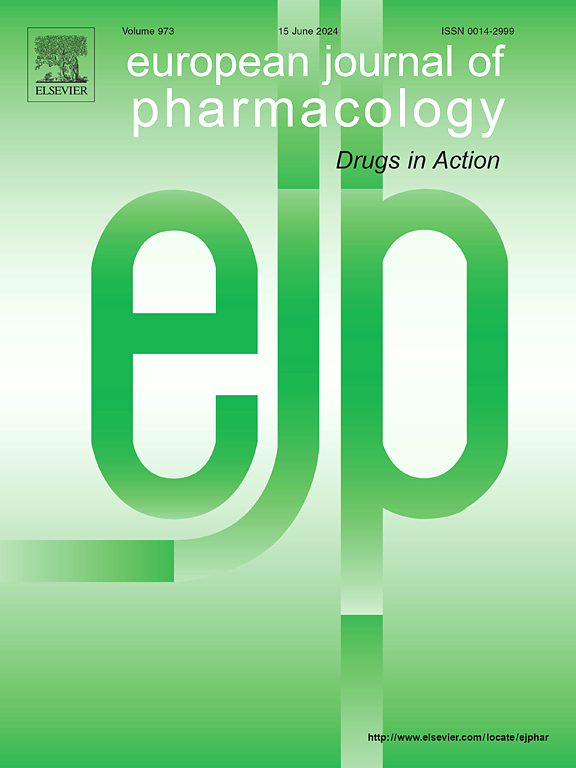非布司他和维生素E治疗MASLD的比较疗效:来自一项随机平行临床研究的见解。
IF 4.2
3区 医学
Q1 PHARMACOLOGY & PHARMACY
引用次数: 0
摘要
目的:我们旨在确定非布司他抑制肝脏黄嘌呤氧化酶(XO)活性和NLRP-3激活是否会影响代谢功能障碍相关脂肪变性肝病(MASLD)的进展。方法:64例MASLD患者分为两组,32例患者每日给予非布司他80 mg,另外32例患者每日给予维生素E 400 mg,每日2次,连续24周。胃肠病学家在基线和六个月后使用纤维扫描和控制衰减参数(CAP)测量来评估脂肪变性的程度。此外,在治疗前后测量肝脂肪变性指数(HSI)、hair评分、NLRP-3、TIM-3、HOMA-IR、MDA、尿酸、血脂和肝功能测试水平。结果:非布司他组脂肪变性改善50%,维生素E组脂肪变性改善46.9%。两组患者CAP评分均显著降低,与非布司他组相比,维生素E组下降更明显(p < 0.001)。与维生素E组相比,非布司他组的NLRP-3、MDA、TIM-3和尿酸水平显著降低。两组的HSI、HAIR评分和肝功能改善相似。结论:非布司他似乎可以有效地减少MASLD患者的脂肪变性,提示其作为非肝硬化MASLD的治疗选择的潜力。Clinicaltrials: gov识别码为NCT05574036,回顾性注册于2022年10月6日。本文章由计算机程序翻译,如有差异,请以英文原文为准。
Comparative efficacy of febuxostat and vitamin E in the management of MASLD: Insights from a randomized parallel clinical study
Aim
We aimed to determine whether inhibiting xanthine oxidase (XO) activity and NLRP-3 activation in the liver with febuxostat could influence the progression of metabolic dysfunction-associated steatotic liver disease (MASLD).
Methods
Sixty-four MASLD patients were divided into two groups: 32 patients received 80 mg of febuxostat daily, while the other 32 patients received 400 mg of vitamin E twice daily for 24 weeks. A gastroenterologist assessed the degree of steatosis using Fibroscan and controlled attenuation parameter (CAP) measurements at baseline and after six months. Additionally, hepatic steatosis index (HSI), HAIR-score, and levels of NLRP-3, TIM-3, HOMA-IR, MDA, uric acid, lipid profile, and liver function tests were measured before and after treatment.
Results
Improvement in steatosis was observed in 50 % of febuxostat group and 46.9 % of vitamin E group. Both groups showed a significant reduction in CAP scores, with more pronounced decrease in vitamin E group (p < 0.001) compared to febuxostat group (p = 0.001). Febuxostat group exhibited significantly lower levels of NLRP-3, MDA, TIM-3, and uric acid compared to vitamin E group. HSI, HAIR score, and liver functions improved similarly in both groups.
Conclusion
Febuxostat appears to be effective in reducing steatosis in MASLD patients, suggesting its potential as a treatment option for non-cirrhotic MASLD.
ClinicalTrials.gov identifier is NCT05574036, Registered October 6, 2022 — Retrospectively
求助全文
通过发布文献求助,成功后即可免费获取论文全文。
去求助
来源期刊
CiteScore
9.00
自引率
0.00%
发文量
572
审稿时长
34 days
期刊介绍:
The European Journal of Pharmacology publishes research papers covering all aspects of experimental pharmacology with focus on the mechanism of action of structurally identified compounds affecting biological systems.
The scope includes:
Behavioural pharmacology
Neuropharmacology and analgesia
Cardiovascular pharmacology
Pulmonary, gastrointestinal and urogenital pharmacology
Endocrine pharmacology
Immunopharmacology and inflammation
Molecular and cellular pharmacology
Regenerative pharmacology
Biologicals and biotherapeutics
Translational pharmacology
Nutriceutical pharmacology.

 求助内容:
求助内容: 应助结果提醒方式:
应助结果提醒方式:


